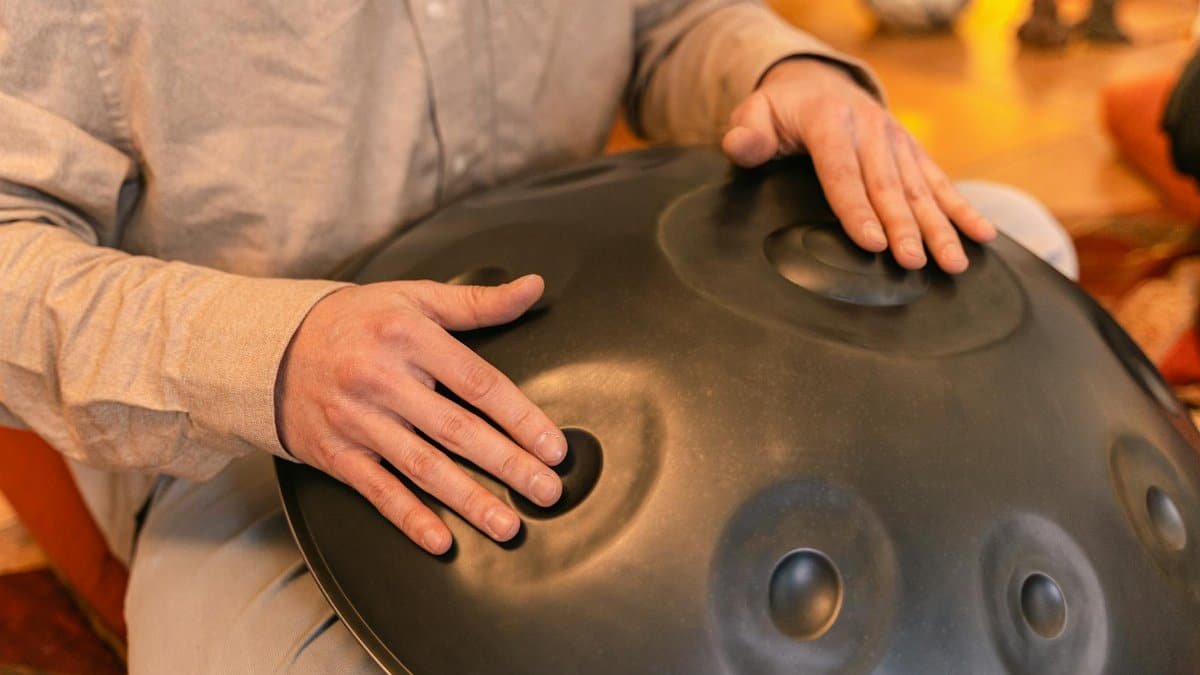In the rush of daily life, where notifications ping endlessly and deadlines loom like storm clouds, Americans are increasingly turning to mindful practices as a quiet rebellion against stress. A recent survey by the American Psychological Association revealed that 62% of adults reported heightened anxiety in 2024, up from previous years, prompting many to seek simple, evidence-based ways to unwind. This surge isn’t just anecdotal; it’s backed by data showing a 25% increase in mindfulness app downloads last year alone. What if these practices, often dismissed as fleeting trends, could offer genuine relief? Enter five accessible mindful practices for relaxation, each drawing from time-tested techniques to ease the mind and body. Among them, practice number two stands out for its ability to soothe frayed nerves, providing a direct counter to the tension that builds up unnoticed.
1. Deep Breathing for Instant Calm

Start with something straightforward, the kind of tool you can pull out in a crowded subway or during a heated work call. Deep breathing, a cornerstone of mindful practices, involves inhaling slowly through the nose, holding for a few counts, and exhaling even more gradually. It’s not about forcing serenity; it’s about redirecting focus from chaos to the rhythm of your own breath.
Picture a harried parent in Chicago, juggling remote work and homeschooling echoes from the next room. She pauses, sets a timer for five minutes, and breathes deeply. Studies from the National Institutes of Health show this technique lowers cortisol levels, the hormone tied to stress. In one controlled trial, participants who practiced daily reported 30% less anxiety after just two weeks. It’s subtle, yet powerful—transforming shallow, frantic breaths into a deliberate anchor.
But don’t stop at basics. Vary it with the 4-7-8 method, popularized by Dr. Andrew Weil: Inhale for four, hold for seven, exhale for eight. Online accounts often describe it as a “reset button” for the nervous system, especially during sleepless nights. The beauty lies in its portability; no mat or quiet room required. As trends in 2025 lean toward hybrid wellness routines, integrating this into morning rituals could shift how we approach the day, making relaxation feel less like a luxury and more like a habit.
Of course, it’s not foolproof. Some find the holding phase uncomfortable at first, a reminder that mindful practices demand patience. Yet, with consistency, it builds resilience, turning fleeting calm into a steady undercurrent.
2. Progressive Muscle Relaxation to Soothe Nerves

Now, onto the standout: progressive muscle relaxation, or PMR, a method that directly targets the physical knots of tension we carry. Developed in the 1920s by physician Edmund Jacobson, it involves tensing specific muscle groups for a few seconds, then releasing them fully, moving from toes to head. This mindful practice soothes nerves by highlighting the contrast between strain and release, essentially training the body to let go.
Imagine a veteran teacher in Atlanta, her shoulders perpetually hunched from grading papers late into the night. She lies down, clenches her fists tight—counting to five—then exhales as the tightness melts away. It’s not magic; it’s physiology. Research from the Mayo Clinic links PMR to reduced sympathetic nervous system activity, which calms the fight-or-flight response. In a 2023 study published in the Journal of Clinical Psychology, participants with generalized anxiety disorder saw a 40% drop in symptoms after eight weeks of practice.
What makes this especially effective for nerve-soothing? It interrupts the cycle of rumination. Nerves aren’t just mental; they’re wired into our muscles, where stress lodges like uninvited guests. By methodically addressing each area—calves, thighs, abdomen—the practice fosters awareness, a key element of mindfulness. One anonymous online reflection captured it well: someone described feeling “like the static in my body finally tuned out,” after incorporating PMR into evenings disrupted by urban noise.
In 2025, as remote work blurs boundaries, this practice gains traction for its brevity—10 to 20 minutes—and adaptability. Pair it with guided audio from apps, but remember, the goal isn’t perfection. Some sessions might feel awkward, muscles resisting at first, but that’s part of the process: acknowledging discomfort without judgment. Over time, it not only soothes nerves but rebuilds a sense of control, turning bodily awareness into a shield against daily pressures.
3. Mindful Meditation for Mental Clarity

Shifting gears, mindful meditation invites a deeper dive, yet it begins simply: sitting quietly, observing thoughts without attachment. Unlike the active tension-release of PMR, this practice emphasizes stillness, watching the mind’s chatter like clouds drifting by. It’s particularly resonant in a culture obsessed with productivity, where mental fog can feel inescapable.
Consider a software engineer in Seattle, bombarded by code bugs and team chats. He dedicates 10 minutes midday to meditation, focusing on his breath amid the hum of his home office. Evidence from Harvard Medical School’s studies indicates that regular practice thickens the prefrontal cortex, enhancing focus and emotional regulation. A landmark 2019 meta-analysis in JAMA Internal Medicine reviewed over 18,000 participants, finding mindfulness meditation reduced depression symptoms by 20% on average.
Variety keeps it fresh—try loving-kindness meditation, sending well-wishes to yourself and others, or a walking version in a park. The challenge? Wandering minds, a universal hurdle. But that’s the point: gently redirecting without self-criticism. As mindful practices evolve in 2025, with virtual reality integrations emerging, this one remains timeless, fostering clarity that spills into relationships and work. It’s less about emptying the mind and more about befriending it, revealing how relaxation stems from acceptance.
4. Body Scan for Full-Body Awareness

Building on meditation’s foundation, the body scan takes awareness a step further, methodically directing attention through each part of the body. Lie down or sit comfortably, starting at the crown of the head and moving downward, noting sensations without trying to change them. This mindful practice for relaxation uncovers hidden tensions, often in places we ignore, like the jaw or lower back.
Envision a nurse in New York, her shifts leaving her wired and exhausted. She practices a 15-minute scan before bed, mentally sweeping from scalp to toes, breathing into tight spots. The Cleveland Clinic reports that body scans improve sleep quality by promoting parasympathetic activation, the rest-and-digest state. In a 2022 study from the University of California, San Diego, chronic pain sufferers experienced 25% less discomfort after consistent use.
It’s intimate, almost narrative—like telling your body’s story. Some days, you might notice warmth in your hands or a flutter in your chest, prompting curiosity over judgment. For those new to mindful practices, it bridges the gap between mind and body, especially useful in high-stress professions. Yet, it requires quiet, which can be elusive; adapt by doing a mini-version during commutes. In essence, it’s a reminder that relaxation isn’t external—it’s an internal exploration, yielding profound calm over time.
5. Gratitude Journaling to Foster Positivity

Rounding out the list, gratitude journaling flips the script from observation to reflection, encouraging daily notes on what’s going well. This mindful practice involves jotting three things you’re thankful for, no matter how small—a warm coffee, a kind word, or a moment of quiet. It rewires the brain toward positivity, countering the negativity bias that amplifies stress.
Think of a retiree in Florida, navigating loneliness post-pandemic. He starts each evening with a journal, recalling a bird’s song or a phone call from family. Research from the Greater Good Science Center at UC Berkeley shows gratitude practices boost dopamine and serotonin, enhancing mood. A 2021 study in Psychological Science found that consistent journaling led to 15% higher life satisfaction scores after a month.
Make it vivid: Describe why something matters, adding sensory details. Challenges arise when days feel bleak, but even noting basics like “a steady heartbeat” counts. As 2025 brings more emphasis on mental health apps with journaling features, this practice stands as a low-tech gem. It doesn’t erase problems but softens their edges, cultivating relaxation through appreciation. Ultimately, it’s about shifting perspective, proving that mindful practices can transform routine into refuge.
These five practices aren’t exhaustive, but they form a versatile toolkit for relaxation in an unpredictable world. Integrating them gradually—perhaps starting with the nerve-soothing power of PMR—can lead to lasting change. As more Americans embrace mindfulness amid ongoing uncertainties, the real benefit emerges not in isolation, but in how these habits weave into everyday life, offering pockets of peace amid the noise.
